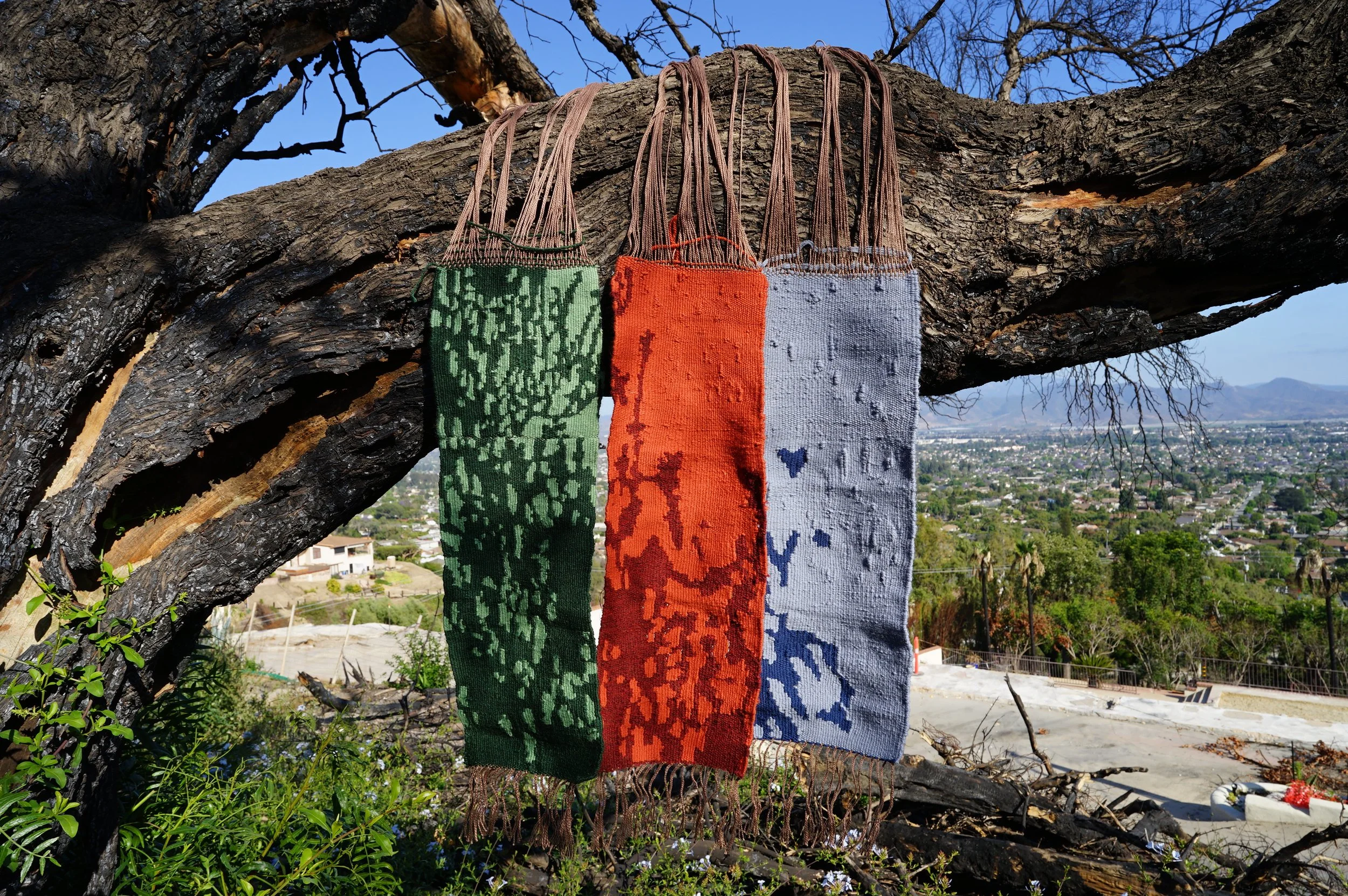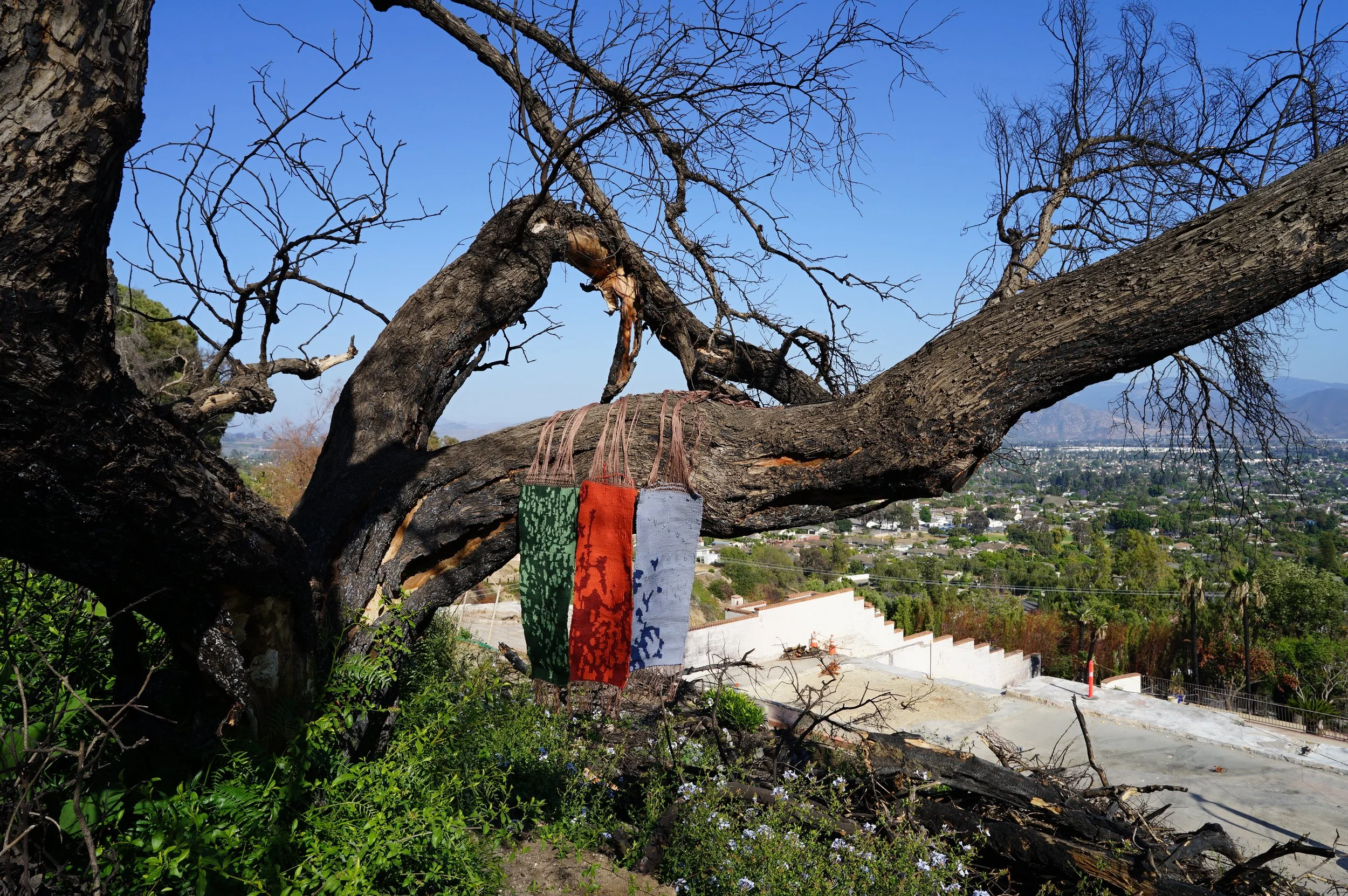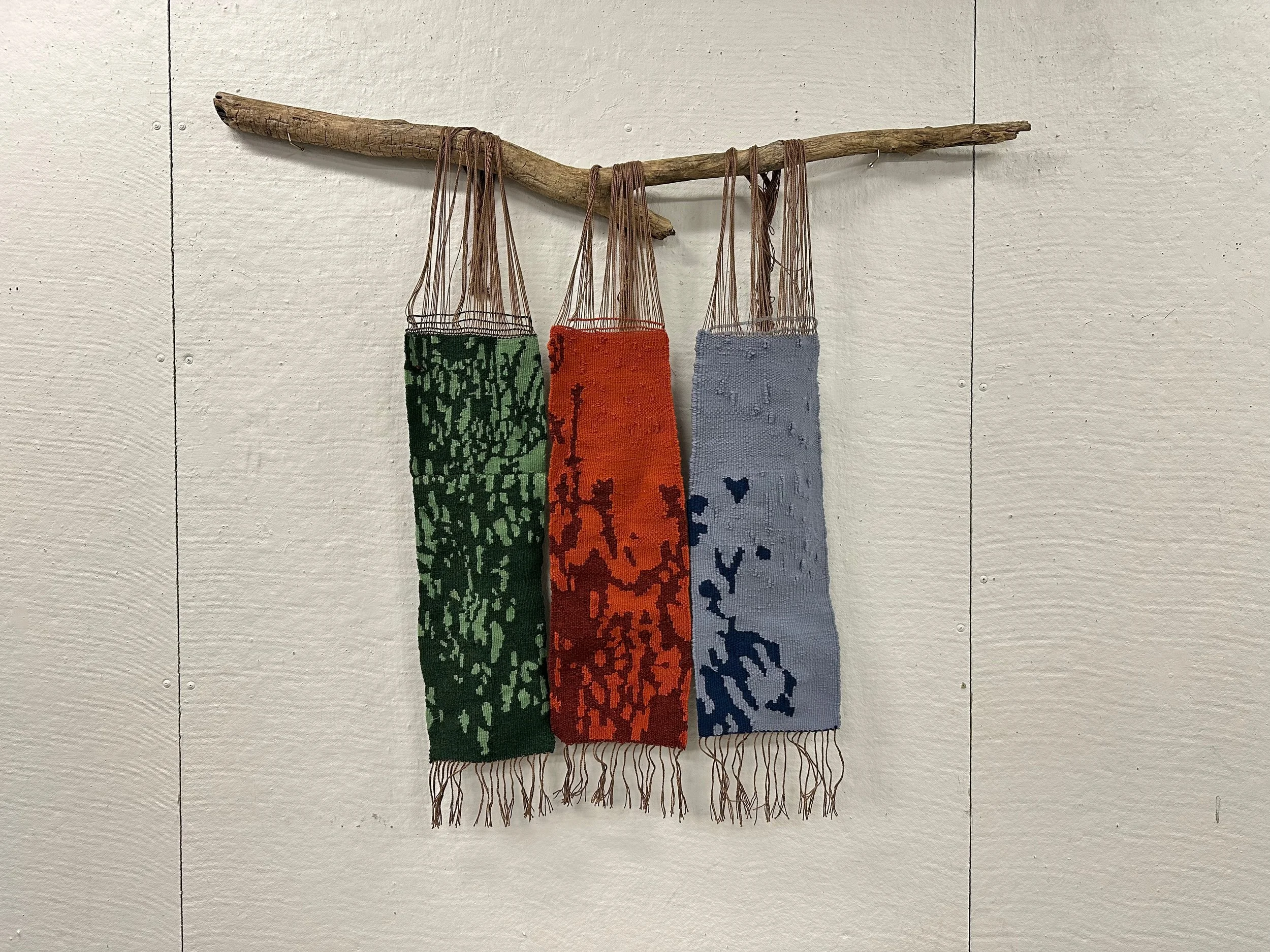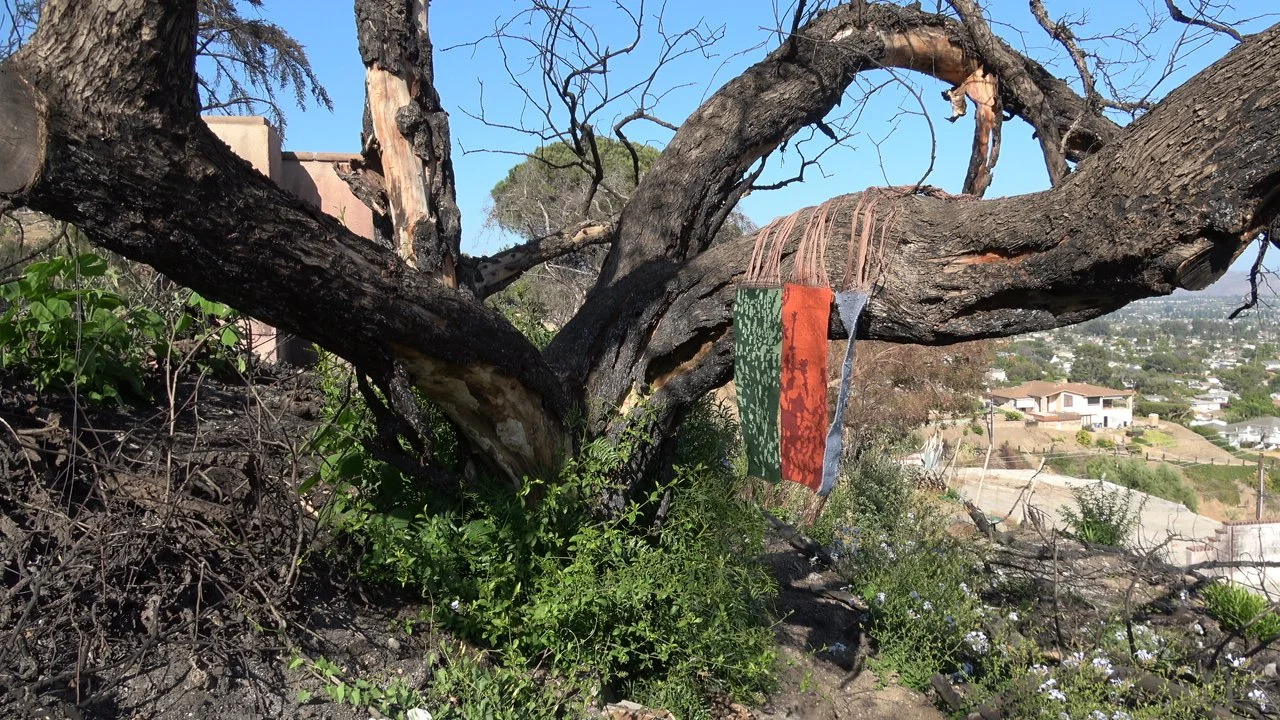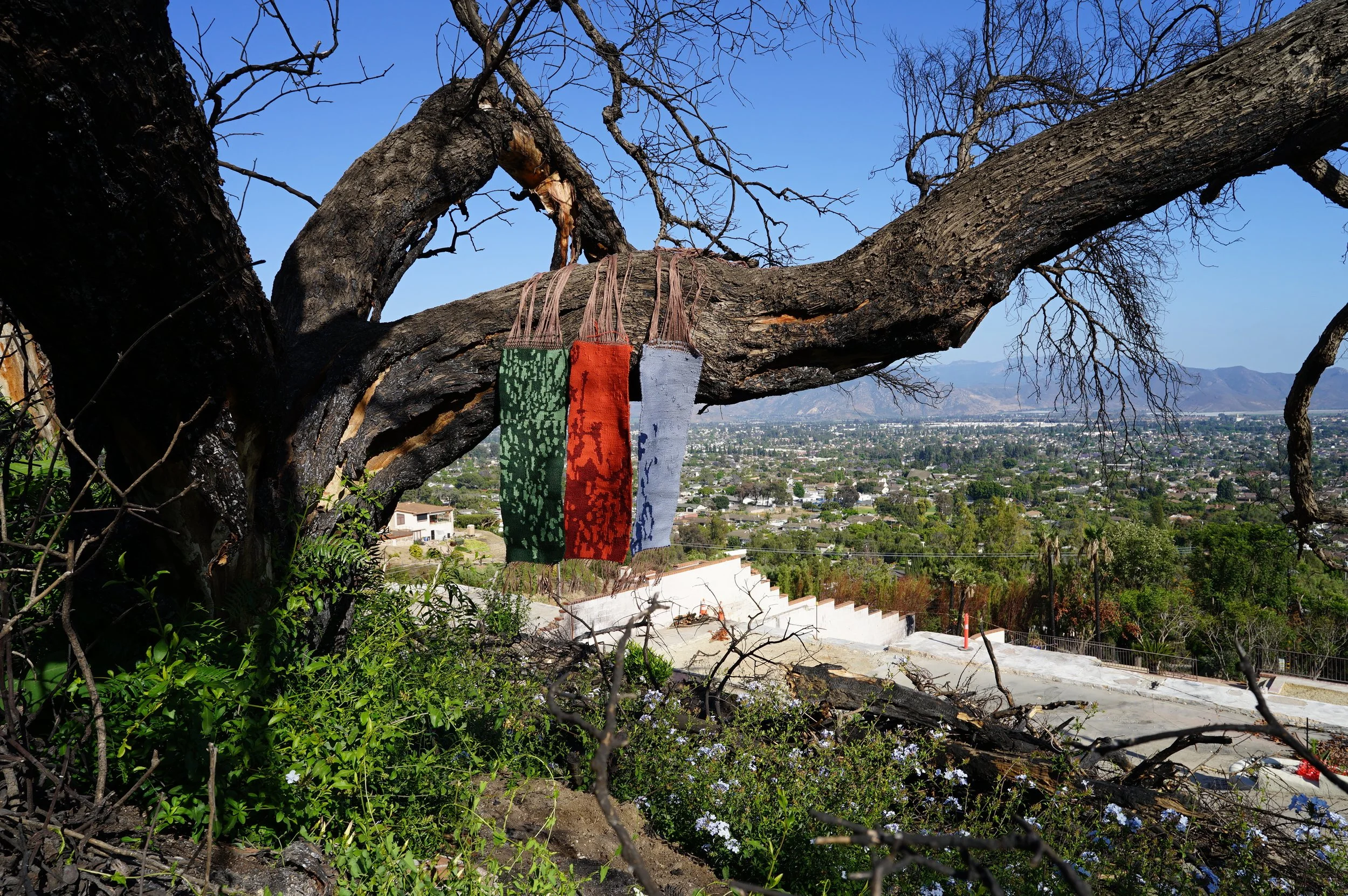The Life and Death of Mother Loquat
Hand-woven tapestry with wool and mercerized cotton
2025
Mounted on the pepper tree; adjacent to where the Loquat tree once stood.
Extracted from an image my grandfather took of my family’s home before the Mountain Fire burned it down, this 3-panel tapestry is a visual depiction of a shadow the Loquat tree cast on the side of the house. Each panel represents a different stage in the Loquat tree’s transition between life and death.
I call this tree Mother Loquat because that was the nature of our relationship: her limbs held me, fed me, taught me about the sun, and how to balance the weight of my body. I returned the gifts of Mother Loquat by harvesting the plump, orange, teardrop-shaped fruits from underneath their fuzzy leaves, spitting the seeds at the base of her trunk.
When the house burned down, I entered a deep state of grief, which brought me to a new way of thinking about nature, climate change, and home. As I processed the profound losses, I imagined myself being held by the Loquat tree again, and I began to wonder how all of it felt for her, whose limbs were turned to ash.
As they emerge, dance, and vanish across landscapes, shadows are a quiet presence that reveal the ever-changing nature of our environment - the reactions between light, life, and time that form these images and relationships. Perhaps shadows are a way for us to escape the metanarratives; to shift us away from the false sense of consistency we get from our landscapes– to acknowledge that the environment is changing and unfolding in perpetuity.
What stories does the landscape tell, in ways that reach beyond our traditional ways of knowing and communicating? Can we imagine the landscape not through our own experience, but through the experiences of non-human beings?
